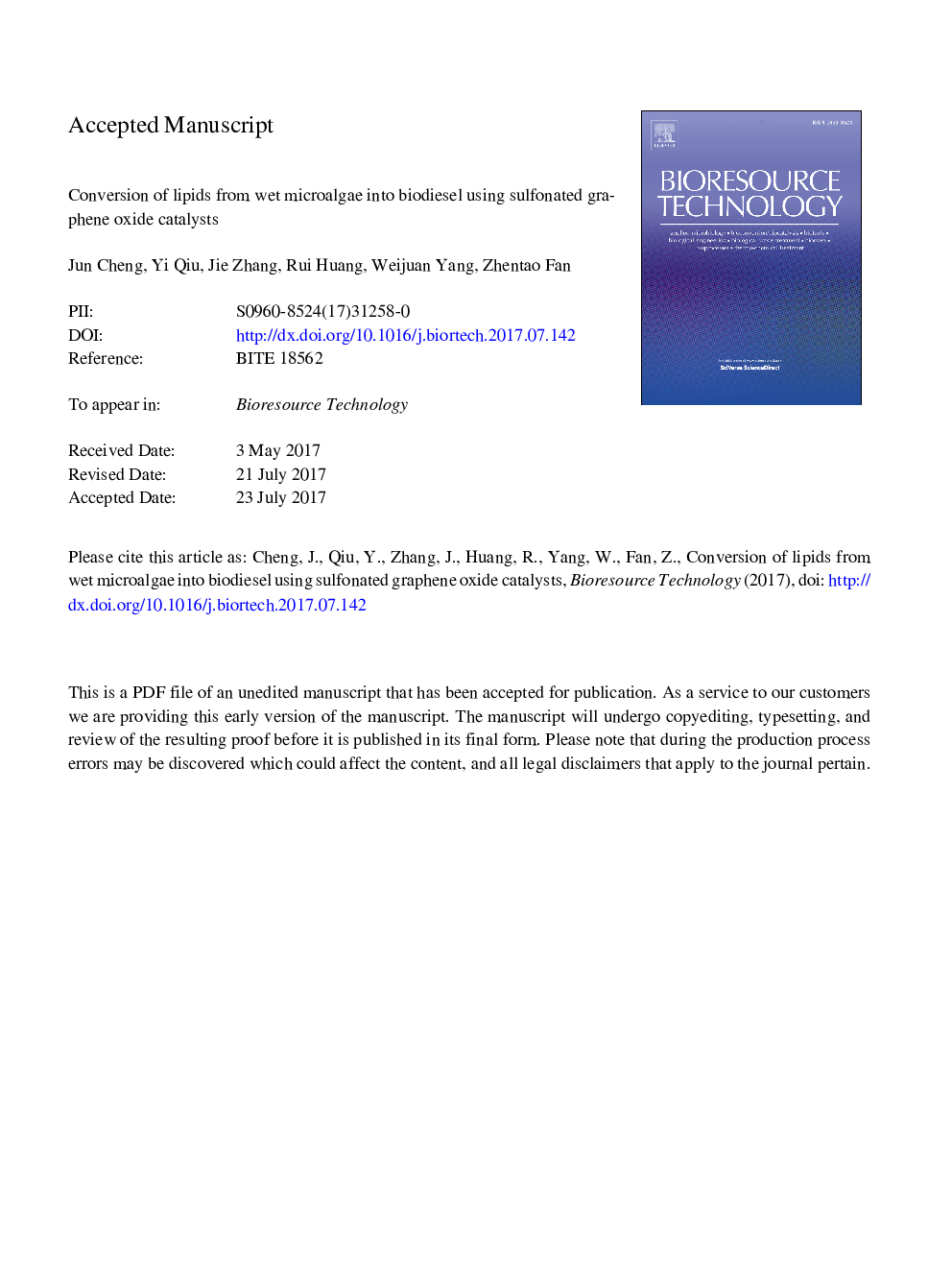| Article ID | Journal | Published Year | Pages | File Type |
|---|---|---|---|---|
| 4996581 | Bioresource Technology | 2017 | 30 Pages |
Abstract
Four solid acid catalysts including graphene oxide (GO), sulfonated graphene oxide (SGO), sulfonated graphene (SG), and sulfonated active carbon (SAC) were used to convert lipids in wet microalgae into biodiesel. The physiochemical properties of the catalysts were characterized with scanning electron microscope, X-ray diffraction, and thermogravimetric analysis. SGO provided the highest conversion efficiency (84.6% of sulfuric acid) of lipids to fatty acid methyl esters (FAME). Whereas SAC converted few lipids into FAME. Fourier transform infrared spectroscopy, X-ray photoelectron spectroscopy, and elemental analysis revealed that much higher hydrophilic hydroxyl content in SGO catalyst resulted in a considerable higher conversion efficiency of lipids to FAME than that (48.6%) catalyzed by SG, although SO3H groups (0.44Â mmol/g) in SGO were less than those (1.69Â mmol/g) in SG. Given its higher SO3H group content than GO (0.38Â mmol/g), SGO had higher conversion efficiency than GO (73.1%), when they had similar hydrophilic hydroxyl contents.
Related Topics
Physical Sciences and Engineering
Chemical Engineering
Process Chemistry and Technology
Authors
Jun Cheng, Yi Qiu, Jie Zhang, Rui Huang, Weijuan Yang, Zhentao Fan,
